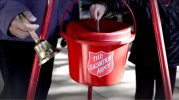Agreed, but a filthy CIC even during a busy watch is a very bad sign. On the ships I served on CIC was the about only place you couldn’t bring food. That said, I am far more disturbed by the implication that the C.O. and exec were rarely on the bridge. That lack of leadership stuns me.
Filthy CIC is not a good thing, but arriving on a ship post-collision with its sewage system shut down also isn't a good snapshot of "normal" ops.
Doesn't rule out a fucked up CIC during routine operations, either though.
Not sure this is a minor point--the lack of "ownership" over these ships was a major point that VADM Aucoin made in his objection to Big Navy's handling of the incident. C7F was held responsible for ships over which C3F held authority.
It's a fair point, but neither Fitz or McCain were C3F ships. Both were homeported Yoko.
C7F's chain of command owned the man, train, equip and certifying them as ready to operate.
It's one of the problems that was called out in the following investigations...same organization that was the "demand" for DDG operational tasking also had the authority to waive training or material certification deficiencies. That was unique to Seventh Fleet.
From folks I know who were recently on both the West Coast and Japan waterfronts....the FDNF-J force is in...less than great shape. To be fair, West Coast DDG's are DDG "Triple digits" while the FDNF-J guys are running DDG 50's and 60's.
I'd argue that this is less about ISIC inspections and more about readiness reporting. From an aviation background the surface Navy is befuddling in how they report material status. Systems can be broken and not CASREPd and whether or not something is CASREPd seems to be CO driven. On the aviation side the material condition of an airplane is determined by a Minimum Equipment Subsystem Matrix (MESM) that tells the maintenance department what missions an airplane is up or down for. Based on the MESM the Squadron then tells the world about how many of their airplanes are up or down. At least during my time on a ship there wasn't something similar that the Shoes did to give a transparent view of the ships material condition. In addition, aircrew log gripes on each aircraft with maintenance control after they fly (or before in some cases) and then maintenance tracks and fixes the gripes. Again, 6yrs ago, there wasn't a central maintenance control that tracked all the shipboard gripes to completion. Maintenance responsibility was delegated to the departmental level.
Maybe not ISIC inspections, but ISIC presence is definitely an "opportunity" for everybody to turn to and make things run right. Having said that, that also requires a competent ISIC. Plenty of stories of fucked up ISIC's who show up and proceed to blast good practices while reinforcing outdated/bad ones as well.
The readiness reporting is actually pretty damn clear. If it doesn't work, and it impacts mission readiness, you release a CASREP. Where it can become a problem is that if the crew doesn't understand how a certain degradation affects mission readiness, then they won't report it.
There's also a very "rough" understanding on the technical side of how their equipment works.
To be blunt, I don't give Surface Navy chiefs blanket trust as technical experts any more. There are still many great ones, but way more shitty ones than there should be.
And I don't know how the aviation side is with I/D level maintenance support, but the Fleet's dependence on civilian/contractor troubleshooting support is more, not less.



